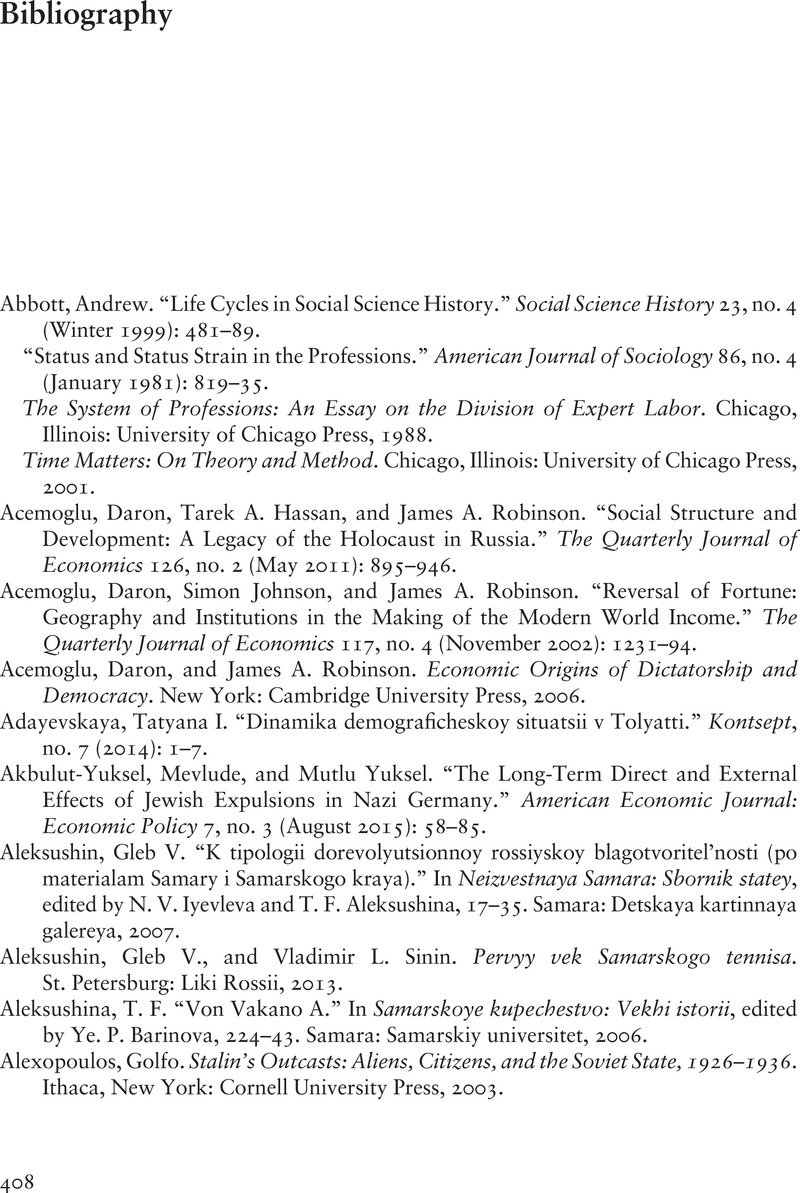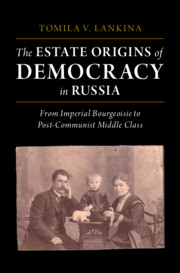Book contents
- Reviews
- The Estate Origins of Democracy in Russia
- The Estate Origins of Democracy in Russia
- Copyright page
- Dedication
- Contents
- Figures
- Tables
- Preface
- Notes on Transliteration
- Abbreviations
- Dramatis Personae
- 1 Theorizing Post-Revolutionary Social Resilience
- 2 From Imperial Estates to Estatist Society
- 3 Mapping Society and the Public Sphere in Imperial Russia
- 4 The Professions in the Making of Estatist Society
- 5 Education, Socialization, and Social Structure
- 6 Market Values and the Economy of Survival
- 7 Family Matters: Looking Back – and Forward – in Time
- 8 Society in Space
- 9 The Two-Pronged Middle Class: Implications for Democracy across Time and in Space
- 10 The Bourgeoisie in Communist States: Comparative Insights
- Afterword
- Supplementary Appendices
- Bibliography
- Index
- References
Bibliography
Published online by Cambridge University Press: 02 December 2021
- Reviews
- The Estate Origins of Democracy in Russia
- The Estate Origins of Democracy in Russia
- Copyright page
- Dedication
- Contents
- Figures
- Tables
- Preface
- Notes on Transliteration
- Abbreviations
- Dramatis Personae
- 1 Theorizing Post-Revolutionary Social Resilience
- 2 From Imperial Estates to Estatist Society
- 3 Mapping Society and the Public Sphere in Imperial Russia
- 4 The Professions in the Making of Estatist Society
- 5 Education, Socialization, and Social Structure
- 6 Market Values and the Economy of Survival
- 7 Family Matters: Looking Back – and Forward – in Time
- 8 Society in Space
- 9 The Two-Pronged Middle Class: Implications for Democracy across Time and in Space
- 10 The Bourgeoisie in Communist States: Comparative Insights
- Afterword
- Supplementary Appendices
- Bibliography
- Index
- References
Summary

- Type
- Chapter
- Information
- The Estate Origins of Democracy in RussiaFrom Imperial Bourgeoisie to Post-Communist Middle Class, pp. 408 - 436Publisher: Cambridge University PressPrint publication year: 2021



